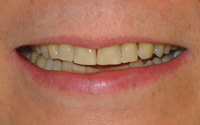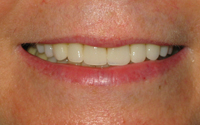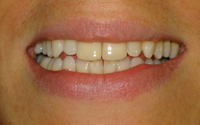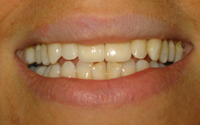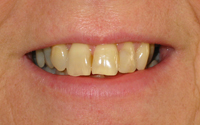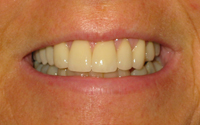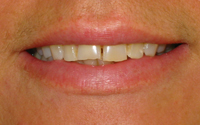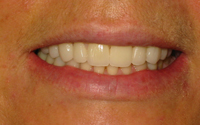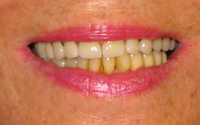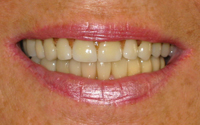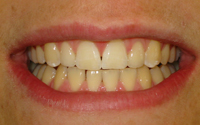Some of the shiny, outer enamel surface of the tooth may be removed, to make sure that the veneer can be bonded permanently in place later. The amount of enamel removed is tiny and will be the same as the thickness of the veneer to be fitted, so that the tooth stays the same size.
A local anaesthetic (injection) may be used to make sure that there is no discomfort, but often this is not needed. Once the tooth has been prepared, the dental team will take an ‘impression’ (mould). This will be given to the dental technician, along with any other information needed to make the veneer. The colour of the surrounding teeth is matched on a shade guide to make sure that the veneer will look entirely natural.
What about alternatives?
A natural-coloured filling material can be used for minor repairs to front teeth. This is excellent when the tooth can support a filling, but may not work so well for broken tooth corners. There will always be a join between the tooth and the filling material.
Crowns are used for teeth which need to be strengthened – either because they have broken, have been weakened by a very large filling, or have had root canal treatment.
Will the treatment hurt?
Scaling and polishing is usually pain free. However, if you do have any discomfort the hygienist can use anaesthetic creams, or give you some local anaesthetic. It is important that you let the hygienist know at the time so they can help with your pain. Preventive Dental will always try to make the treatment as painless as possible for our patients.
Interested in dental veneers in Wimbledon? Book an appointment by calling us today on 020 8874 3877 or email us smiles@preventivedental.com.
 A veneer is a thin layer of porcelain made to fit over the front surface of a tooth, like a false fingernail fits over a nail. Sometimes a natural-colour ‘composite’ material is used instead of porcelain.
A veneer is a thin layer of porcelain made to fit over the front surface of a tooth, like a false fingernail fits over a nail. Sometimes a natural-colour ‘composite’ material is used instead of porcelain.
